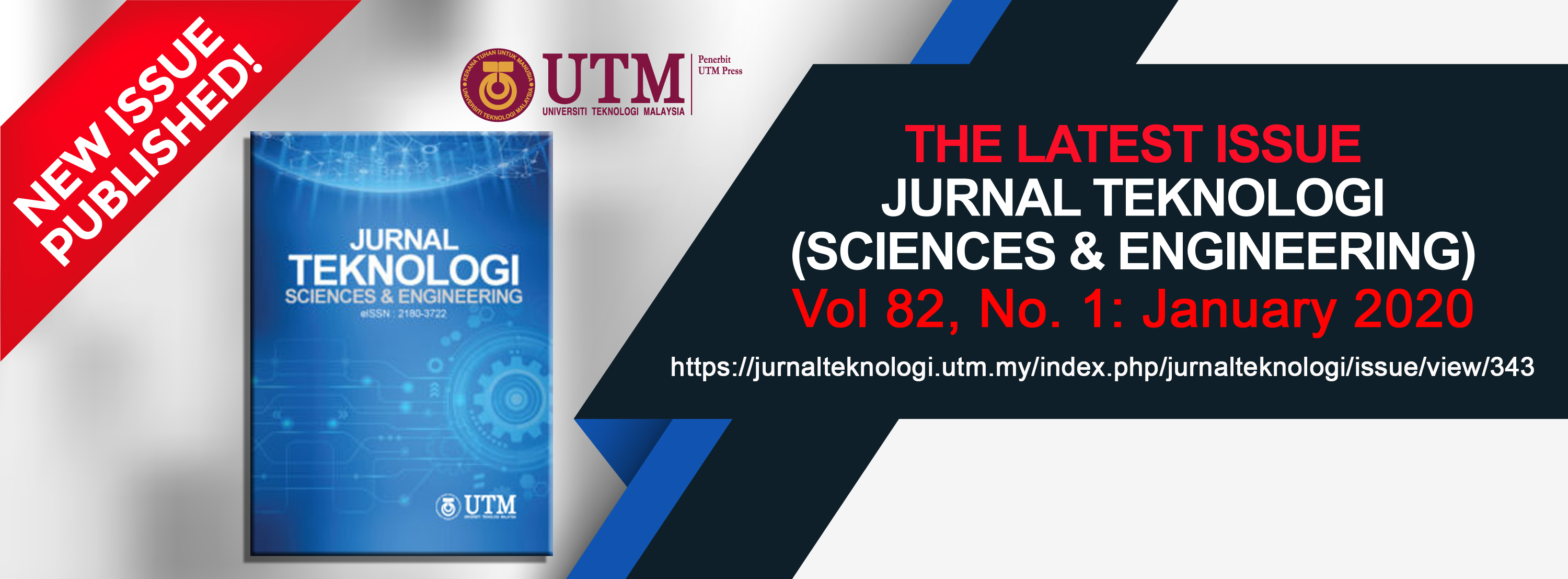DESIGN AND DEVELOPMENT OF SMART VERTICAL GARDEN SYSTEM FOR URBAN AGRICULTURE INITIATIVE IN MALAYSIA
DOI:
https://doi.org/10.11113/jt.v82.13931Keywords:
Vertical garden system, lettuces growth, lettuces height, leaves width, number of leavesAbstract
Vertical garden system has the potential to increase vegetable production in the urban areas in Malaysia. This research designed and developed a compact and smart vertical garden system for the urban agriculture. It also analysed the growth performances of lettuce in the smart vertical garden system which involved two phases; the development of vertical garden system and the monitoring system for nutrient solution. The growth performances of different stacks of lettuce (Lactuca sativa) in the vertical garden system were observed and compared against the commercialised conventional hydroponic system. The growth performances of lettuce in the vertical garden system showed that the most bottom stack (stack 5) of lettuce achieved the maximum level of lettuce height, and had the highest number of leaves and leaves width. Nevertheless, from the overall ANOVA results, at different levels of the stacks of lettuce, only lettuce height was observed as having a significant difference (P < 0.0001) while no significant difference was found in the number of leaves (P = 0.0002) and leaves width (P = 0.0046). The growth development varied due to different amounts of water and light exposure. On the other hand, no significant difference was found when comparing between the vertical garden system and the commercialised conventional hydroponic system (lettuce height, P = 0.4997; number of leaves, P = 0.5325; and leaves width, P = 0.5231). In short, the smart vertical garden system can give the same performance as the commercial conventional hydroponic system.
References
D. Tilman, C. Balzer, J. Hill, B. L. Befort. 2011. Global Food Demand and the Sustainable Intensification of Agriculture. Proc. Natl Acad. Sci. USA. 108: 20260-20264.
R. M. Muhammad, M. Rashid. 2015. The Potential of Urban Farming Technology in Malaysia: Policy Intervention. Food Security and Safety, FFTC Agricultural Policy Articles. 1-5. Retrieved from http://ap.fftc.agnet.org/ap_db.php?id=534.
B. Pandey, K. C. Seto. 2015. Urbanization and Agricultural Land Loss in India: Comparing Satellite Estimates with Census Data. J. Environ. Manage. 148: 53-66. Land Cover/Land Use Change (LC/LUC) and Environmental Impacts in South Asia.
W. Smit, S. Parnell. 2012. Urban Sustainability and Human Health: An African Perspective. Current Opinion in Environmental Sustainability. 4(4): 443-450. http://doi.org/10.1016/j.cosust.2012.07.004.
T. Ahamed, R. Noguchi, T. Tomohiro, T. Lei. 2014. Prosumers in Agriculture. In Bio Production Engineering: A Road Map of Sustainable Agricultural Practice. 1st Edition. Nova Science Publishers. 22-25.
E. F. Lambin, P. Meyfroidt. 2011. Global Land Use Change, Economic Globalization, and the Looming Land Scarcity. Proc. Natl Acad. Sci. USA 108: 3465-3472.
A. Zezza, L. Tasciotti. 2010. Urban Agriculture, Poverty, and Food Security: Empirical Evidence from a Sample of Developing Countries. Food Policy. 35(4): 265-273. http://doi.org/10.1016/j.foodpol.2010.04.007.
G. Rezai, M. N. Shamsudin, Z. Mohamed. 2016. Urban Planning and Architecture Design for Sustainable Development Urban Agriculture: A Way Forward to Food and Nutrition Security in Malaysia. Procedia-Social and Behavioral Sciences. 216: 39-45. http://doi.org/10.1016/j.sbspro.2015.12.006.
C. Eigenbrod, N. Gruda. 2014. Urban Vegetable for Food Security in Cities. A Review. Agron. Sustain. Dev. 35: 483-498.
D. Despommier. 2010. Are Vertical Farms the Future? Smithsonian Copper- Hewwit. National Design Journal. 12-13. Retrieved from http://www.weberthompson.com/cmsdocuments/NDJ_-_Vertical_Farm_spread.pdf.
D. Despommier. 2013. Farming Up the City: The Rise of Urban Vertical Farms. Trends in Biotechnology. 31(7): 388-9. http://doi.org/10.1016/j.tibtech.2013.03.008.
M. Brechner, A. J., Both, Staff CEA, Hydroponic Lettuce Handbook. Cornell Controlled Environment Agriculture, Cornell University, n.d.
W. L. Berry, S. Knight. 1997. Chapter 8 : Plant Culture in Hydroponics. Plant Growth Chamber Handbook. Retrieved from http://www.controlledenvironments.org/Growth_Chamber_Handbook/Plant_Growth_Chamber_Handbook.htm.
N. S. Mattson, C. Peters. 2014. A Recipe for Hydroponic Success. Inside Grower, 16–19. Retrieved from http://www.greenhouse.cornell.edu/crops/factsheets/hydroponic-recipes.pdf.
R. Hensen. 2012. Manage pH and Soluble Salts in Hydroponics. Greenhouse Grower. 1-6. Retrieved from http://www.greenhousegrower.com/uncategorized/manage-ph-and-soluble-salts-in-hydroponics/.
K. Mengel, E. A. Kirkby. 1979. Principles of Plant Nutrition. 2nd edition. International Potash Institute, Berne.
D. Touliatos, I. C. Dodd, M. McAinsh. 2016. Vertical Farming Increases Lettuce Yield Per Unit Area Compared to Conventional Horizontal Hydroponics. Food and Energy Security. 5(3): 184-191.
Downloads
Published
Issue
Section
License
Copyright of articles that appear in Jurnal Teknologi belongs exclusively to Penerbit Universiti Teknologi Malaysia (Penerbit UTM Press). This copyright covers the rights to reproduce the article, including reprints, electronic reproductions, or any other reproductions of similar nature.
















